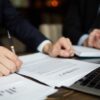XRP Faces Downward Pressure Amid Legal Battles and Market Sentiment
Ripple’s XRP is currently navigating a challenging landscape, grappling with legal uncertainties and shifting market dynamics. The price of XRP has been on a downward trend, reflecting investor caution. As of the latest update, XRP is trading at $2.1540, marking a 1.20% decrease for the day.
Bitcoin’s consolidation has introduced uncertainty among cryptocurrency traders, contributing to a risk-averse sentiment. This is evident in the outflows observed in XRP investment products.
Traders are closely monitoring the daily price chart for potential signals of a reversal in XRP’s price trend this week.
Technical Analysis of XRP
Ripple’s ongoing legal battle with the SEC continues to cast a shadow over XRP. An unexpected third party has even presented a document questioning the interpretation of the Howey Test, adding to the concerns surrounding the lawsuit. The daily price chart suggests a potential for further decline in XRP amid these legal challenges.
XRP has been consolidating below the $2.7000 resistance level for nearly three months. Key support levels to watch are $2.0350, the 23.6% Fibonacci retracement of the decline from the $3.4000 high to the $1.6134 low, and $1.7600, a crucial support level that has held for approximately six months.
A potential 18% drop could see XRP testing the $1.7600 support if the altcoin extends its losses this week.
Technical indicators, including the Relative Strength Index (RSI) and the Moving Average Convergence Divergence (MACD), support a bearish outlook for XRP. The RSI reads 39 and is trending downward, while the MACD shows red histogram bars below the neutral line.
Key resistance levels to watch on the upside are the 38.2% Fibonacci retracement level and the 50% Fibonacci marker at $2.2959 and $2.5067, respectively.
Market Overview: Catalysts Influencing Ripple Demand and XRP Price
The emergence of a new document in the SEC’s lawsuit against Ripple has prompted legal experts to comment on the uncertainty surrounding the legal battle’s resolution.
Additional factors, such as the increasing outflows from investment funds focused on XRP, totaling $28 million last week, are influencing sentiment among XRP holders and market participants. XRP led the losses among altcoins, while Ethereum led the gains.
Typically, outflows suggest a bearish trend and indicate declining investor interest and participation, while inflows signal growing demand and support a bullish outlook.
- Technical indicators on the daily price chart suggest a potential for further correction.
- XRP extended its losses, with bears targeting the $1.7600 support level.
- XRP investment products experienced significant outflows, leading altcoins with over $28 million in outflows last week.
Ripple FAQs
Is XRP a security?
It depends on the transaction, according to a court ruling issued on July 14:
For institutional investors or over-the-counter sales, XRP is a security.
For retail investors who purchased the token through programmatic sales on exchanges, on-demand liquidity services, and other platforms, XRP is not a security.
What is the SEC’s lawsuit against Ripple about?
The U.S. Securities and Exchange Commission (SEC) accused Ripple and its executives of raising over $1.3 billion through an unregistered securities offering of the XRP token.
While the judge ruled that programmatic sales are not considered securities, sales of XRP tokens to institutional investors are investment contracts. In the latter case, Ripple did violate U.S. securities law and will have to continue litigating for the approximately $729 million it received under written contracts.
What are the implications of the court ruling for Ripple and the crypto industry?
The ruling offers a partial victory for both Ripple and the SEC, depending on what you look at.
Ripple gets a big win over the fact that programmatic sales are not considered securities, and this could bode well for the cryptocurrency sector in general, as most assets in the SEC’s crosshairs are handled by decentralized entities that sold their tokens primarily to retail investors through exchange platforms, experts say.
Still, the ruling does not do much to answer the key question of what makes a digital asset a security, so it is still unclear whether this lawsuit will set a precedent for other open cases affecting dozens of digital assets. Issues such as what is the appropriate degree of decentralization to avoid the “security” label or where to draw the dividing line between institutional and programmatic sales are likely to persist.
How is the SEC regulating the crypto industry?
The SEC has stepped up its enforcement actions toward the blockchain and digital asset industry, filing charges against platforms such as Coinbase or Binance for allegedly violating U.S. Securities Law. The SEC claims that most crypto assets are Securities and are therefore subject to strict regulation.
While defendants can use parts of the Ripple ruling in their favor, the SEC may also find in it reasons to maintain its current strategy of regulation through enforcement.
What is the current status of the Ripple case?
The court ruling is a partial summary judgment. The ruling can be appealed once a final judgment is issued or if the judge allows it sooner. The case is in a pre-trial phase, in which both Ripple and the SEC still have the possibility of reaching an agreement.
Stay ahead of the curve in the fast-paced crypto world – explore the latest updates and trends at Cryptonewsfeeds.com.










